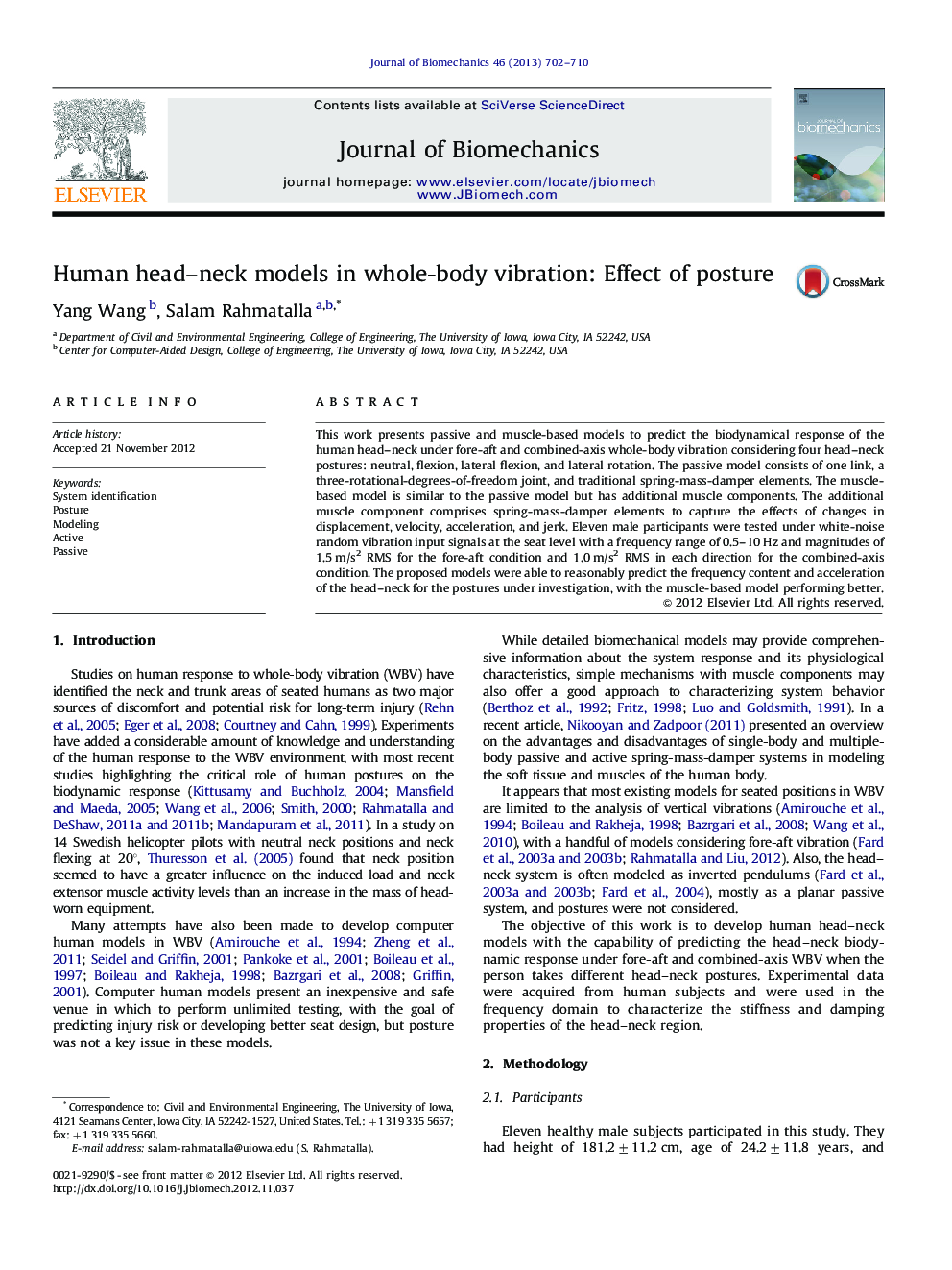| Article ID | Journal | Published Year | Pages | File Type |
|---|---|---|---|---|
| 10432932 | Journal of Biomechanics | 2013 | 9 Pages |
Abstract
This work presents passive and muscle-based models to predict the biodynamical response of the human head-neck under fore-aft and combined-axis whole-body vibration considering four head-neck postures: neutral, flexion, lateral flexion, and lateral rotation. The passive model consists of one link, a three-rotational-degrees-of-freedom joint, and traditional spring-mass-damper elements. The muscle-based model is similar to the passive model but has additional muscle components. The additional muscle component comprises spring-mass-damper elements to capture the effects of changes in displacement, velocity, acceleration, and jerk. Eleven male participants were tested under white-noise random vibration input signals at the seat level with a frequency range of 0.5-10Â Hz and magnitudes of 1.5Â m/s2 RMS for the fore-aft condition and 1.0Â m/s2 RMS in each direction for the combined-axis condition. The proposed models were able to reasonably predict the frequency content and acceleration of the head-neck for the postures under investigation, with the muscle-based model performing better.
Related Topics
Physical Sciences and Engineering
Engineering
Biomedical Engineering
Authors
Yang Wang, Salam Rahmatalla,
